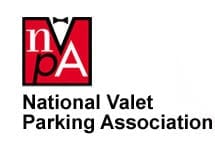 To follow-up on our post last week about valet company insurance, we wanted to cover another important topic for
To follow-up on our post last week about valet company insurance, we wanted to cover another important topic for
valet companies this: valet parking rules and regulations. Though it can be more complex in some situations, there are two general bodies which establish valet parking rules and regulations. The National Valet Parking Association provides standards for admissions that can be considered as industry best practices. Your local municipality is also going to have specific laws and ordinances which govern how you operate your company. We cover those in our post on valet parking laws. In this article, we’ll focus on the valet parking rules and regulations as specified by the National Valet Parking Association.
NVPA Valet Parking Rules and Regulations
The valet parking standards adopted by the NVPA include safety, security, employee management, insurance, claims management, and customer service. We’ll examine each of those in more detail to see where you may need to review and what you’ve already got covered.
Safety and Security
The valet parking rules and regulations regarding safety and security consist of:
- Secure storage and handling of all cash, keys, and vehicles
- A safe work environment for employees
- A strict policy establishing good driving habit among employees.
Cash and vehicle keys must be protected by a valet key box or stored inside a lockable valet podium. Likewise all  vehicles must be locked after they’ve been parked.
vehicles must be locked after they’ve been parked.
If you don’ already have some sort of training program for your employees, we would highly recommend you start. Though a lot of the rules and regulations here may seem like obvious, you’ll avoid a lot of headaches and potential liability issues with a quality training program. This could take the form of a training session or an apprenticeship period for new employees so they fully understand what’s expected of them and how to do their job properly.
Employee Management
Your employees behavior and how you manage them can be the trickiest part of adherence to NVPA standards and perhaps the most important. Good hiring practices can go a long way towards making employe management easier. If you haven’t already, make sure you are checking driving records, references, and administering some sort of integrity or honesty test with applicants. Once you’ve hired, providing written, class, and/or on-site training for your employees is the next step.
Topics that are worth covering in a valet employee training program could include:
- What constitutes safe driving habits
- How to maintain a safe working environment
- Procedures for how to report unsafe conditions to management
- How to handle cash appropriately
- Customer Service Standards
Valet Company Insurance
We’ve touched on valet company insurance in greater detail before, but it’s worth a short recap. The NVPA requires general liability insurance (min. $5,000,000), garage keepers legal liability insurance (min. $1,000,000), and workmen’s compensation insurance (min. as required by state law). It’s worth investigating your specific coverage and insurance in detail as it’s typical a major source of overhead and liability for most valet companies. It’s also worth seeing how much additional coverage would be and what potential holes exist in your coverage as the three aforementioned policies aren’t all inclusive.
Claims Management
The National Valet Parking Association requires having professional procedures in place for settling claims. This means you should have a trained claims adjuster and professional claim forms that customers can use at all your locations. You should also go ahead and create written procedures for customers and employees to follow if anything were to happen.
Customer Service
Customer Service is perhaps the most difficult thing to control as a valet company owner or manager and it’s also probably the most important. The valet service is usually the first impression that a customer will receive when they get to a venue so it’s essential that it be professional and courteous. Instituting a training program that addresses customer service standards and procedures is the best way to accomplish this as well as providing some sort of written material for reference after the training program is done.
Employee appearance is also key to providing the level of customer service you need to satisfy your customers. Your employees should be dressed to reflect the standards of your service and the quality that accompanies it. That means some sort of professional uniform that makes them easily identifiable to customers. You should also implement an appropriate grooming standard to make sure employees look the part.

